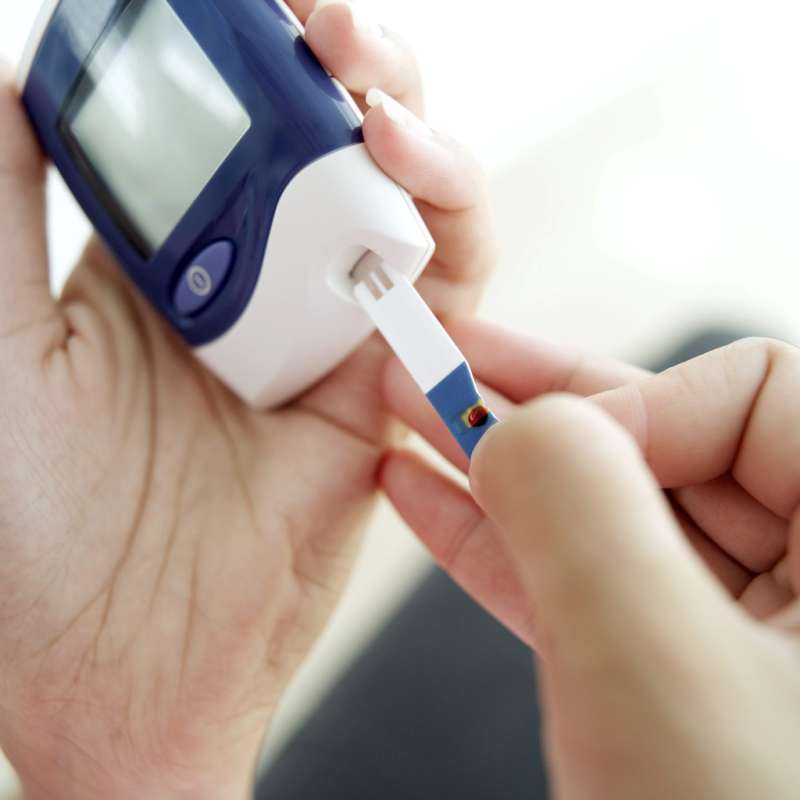Diabetes is sweeping India, enveloping entire generations, ignoring age and setting new global records, as it trebled over the past two decades. In 1995, India had 19.4 million diabetics. But now it is 66.8 million. That makes India, home to 17 percent of the world’s population, also home to 17 percent of the world’s diabetics…. writes Charu Bahri

Sharad Tripathi of Meerut developed diabetes five years ago, at 33, “no thanks to the stressful life of a sales person that involves a lot of travel, eating out and irregular meal times, and no time for exercise”. Just when Tripathi learnt to manage his condition — with medication and lifestyle changes — his mother, in her mid-60s, developed diabetes. Tripathi senior joined the club a year later, at age 70.
Tripathi found himself sharing the dos and don’ts of living with diabetes with his parents. The family’s predicament indicates how fast the disease is sweeping India, enveloping entire generations, ignoring age and setting new global records, as it trebled over the past two decades.
In 1995, India had 19.4 million diabetics. Within 19 years, that number had more than tripled to 66.8 million in 2014, according to the International Diabetes Federation (IDF). That makes India, home to 17 percent of the world’s population, also home to 17 percent of the world’s diabetics.
Another 77 million Indians are currently believed to be pre-diabetic, according to the Indian Council of Medical Research.
In 2010, diabetes stood 18th in the list of diseases by years of life lost, up from 31 in 1990, as per the Global Burden of Disease Study 2010. Deaths attributable to diabetes grew 41 percent from 161,000 to 227,300 between 2000 and 2012, according to the World Health Organisation.
That increase was enough to catapult diabetes into the top 10 of killer diseases in India. The IDF pegs annual deaths due to diabetes in India at more than one million, possibly because poorly controlled diabetes brings on other killer diseases.

Diabetes in India now cuts across all age groups and geographies. Although it is more prevalent in urban areas, rural India will catch up as lifestyles change. In cities like Chennai,Delhi and Kochi, one in five adults is diabetic.
There is little doubt that India is witnessing a diabetes epidemic — brought on by Indians.
We aren’t like that only
Some offer the old excuse for India’s diabetes explosion — that a predisposition to diabetes is written in our genes.
Those of Indian ethnicity have a genetic propensity to acquire metabolic syndrome, a set of five conditions of which you need only three to enter the class. One condition is both visual and measurable: the apple-shaped body. The others are measurable: high blood pressure, low high-density lipoprotein (HDL), high triglycerides and high fasting blood-glucose.
Metabolic syndrome increases the risk for developing diabetes over the next five years five-fold, according to Enas A Enas, American-Indian cardiologist and head of the CADI (Coronary Artery Disease among Asian Indians) Research Foundation in the USA.
“If you have metabolic syndrome, consider yourself in line for diabetes,” said Seema Gulati, head of the Nutrition Research Group, Center of Nutrition & Metabolic Research (C-NET), National Diabetes, Obesity and Cholesterol Foundation.
Indians tend to have more fat than muscle at a given body mass index, vis-à-vis Caucasians. “This means even normal weight Indians would metabolically be considered obese individuals,” explained Gulati.
Obesity is a known risk factor for diabetes.
Children of people with diabetes tend to develop the disease. A study in Chennai found 55 percent of the offspring of two diabetic patients had either diabetes or impaired glucose tolerance, a pre-diabetic condition, compared to 15.6 percent of those with no family history of diabetes.
The upward trend of diabetes explains why current generations cannot blame their genetic heritage for the ongoing diabetes explosion.
“The influence of globalisation and urbanisation are the single biggest factors for India’s diabetes epidemic,” said V. Mohan of Dr. Mohan’s Diabetes Specialities Centre, Chennai, and founder of Madras Diabetes Research Foundation. “Our eating habits now resemble the west and we’ve adopted sedentary lifestyles.”
Indians have traded dal-sabzi-roti for pizzas, burgers and other calorie-dense goodies. Researchers Nikhil Tandon and Nishant Raizada estimate that city-dwellers consume up to 32 percent of the daily energy requirement as fat.
We rely on cars to get around. We’ve hired help and bought machines to perform household calorie-burning chores, and, for the most part, not bothered to replace those activities with exercise. At work too, more Indians than ever before are employed in sedentary white-collar jobs.
In other words, Indians are bringing diabetes on themselves.
It boils down to life choices
If faulty lifestyle is the cause, lifestyle modification is the cornerstone of diabetes management.
Overall, the chances of diabetes depend 80 percent on the environment, 20 percent on genes, said Anoop Misra, chairman, Fortis Centre of Excellence for Diabetes, Metabolic Diseases and Endocrinology, and chairman, National Diabetes, Obesity and Cholesterol Foundation.
By aggressively pursuing changes, diabetics can manage without medication or with lower doses of drugs.